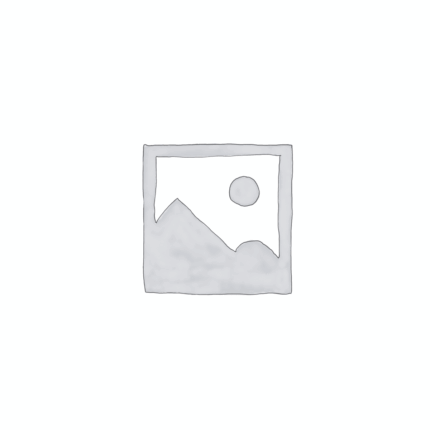Defoamer
Defoamer is a high-performance, silicone-based antifoaming agent designed to eliminate and prevent foam formation in aqueous and non-aqueous systems. It is typically a milky-white or translucent emulsion composed of modified polydimethylsiloxane, hydrophobic silica, and proprietary surfactants or emulsifiers. Defoamer is known for its immediate foam knockdown, long-lasting suppression, and compatibility across diverse formulations. It is widely used in industrial processes, coatings, adhesives, water treatment, textiles, and more. It is effective at low concentrations, thermally stable, and resistant to shear and pH fluctuations.
Defoamer
Primary Uses
Paints & Coatings
- Eliminates foam during manufacturing, mixing, and application of waterborne coatings, emulsions, and latex-based paints.
- Ensures smooth finish, uniform film formation, and improved surface aesthetics.
- Prevents surface defects such as craters, fisheyes, and pinholes caused by trapped air bubbles.
Adhesives & Sealants
- Controls and prevents foam formation in water-based and hot-melt adhesives during production and application.
- Improves bonding consistency and coating uniformity by reducing air entrapment.
Pulp & Paper Industry
- Used in the wet-end of paper manufacturing processes to suppress foam in stock preparation, coating, and wastewater.
- Enhances drainage efficiency, sheet formation, and surface quality.
Detergents & Cleaning Products
- Included in industrial and institutional cleaning formulations such as floor cleaners, carpet shampoos, and pressure wash detergents to suppress foam.
- Protects equipment and improves rinsability in automatic cleaning systems (CIP).
Wastewater Treatment
- Controls surface foam in aeration tanks, clarifiers, and biological treatment systems.
- Enhances operational efficiency by preventing foam-related overflows and sensor interference.
Secondary Uses
Oil & Gas Industry
- Used in drilling muds and completion fluids to prevent foam buildup during high-shear mixing and downhole operations.
- Aids in degassing operations and improves fluid handling in oil recovery systems.
Textile Processing
- Controls foam during scouring, dyeing, and finishing operations.
- Prevents overflow and spotting in fabric treatments and dye baths.
Concrete & Cement Additives
- Used in concrete admixtures to reduce air entrainment and improve surface finish in high-performance concrete.
- Improves demolding quality and reduces surface imperfections.
Fermentation & Food Processing (Non-food Grade Versions)
- Used in fermentation-based processes such as enzyme production, yeast cultivation, and brewing (non-ingestible systems) to control foam levels.
- Enhances productivity by maintaining proper airflow and volume in bioreactors.
Metalworking Fluids & Lubricants
- Added to soluble cutting oils and coolants to control foam in high-speed machining and grinding operations.
- Improves heat transfer and fluid recycling efficiency.
1. Basic Identification Attributes
- Chemical Name (IUPAC): Not applicable (mixture of polydimethylsiloxanes and hydrophobic silica in emulsion form)
- Common/Trade Name: Defoamer M37
- CAS Number: Not applicable for blend; main component typically Polydimethylsiloxane (CAS 63148-62-9)
- HS Code: 3824.99.96
- Molecular Formula: Not applicable (mixture)
- Synonyms:
- Silicone Antifoam M37
- Silicone Emulsion Defoamer
- PDMS-based Antifoaming Agent
- Polysiloxane Defoamer
2. Physical & Chemical Properties
- Physical State: Liquid emulsion
- Color & Odor: Milky white to translucent; mild characteristic odor
- Melting Point: Not applicable
- Boiling Point: >100°C (water-based emulsion)
- Density: 0.85–0.95 g/cm³
- Solubility:
- Dispersible in water
- Insoluble in organic solvents
- Viscosity: 300–2000 mPa·s (depending on grade)
- pH: 6.0–8.0
- Stability: Stable under normal storage; resistant to shear, acid, alkali, and temperature variations
3. Safety & Hazard Attributes
- Hazard Class (GHS): Not classified as hazardous under normal use
- NFPA Ratings:
- Health: 0
- Flammability: 1
- Reactivity: 0
- Exposure Limits: Not established
- Toxicity: Non-toxic in recommended concentrations; avoid inhalation of mists
- Reactivity: Non-reactive under standard conditions; avoid strong oxidizing agents
4. Storage & Handling Attributes
- Storage Conditions: Store in a cool, dry place away from direct sunlight and freezing temperatures
- Container Type: HDPE drums, IBC tanks, or sealed plastic containers
- Shelf Life: Up to 12 months when stored under proper conditions
- Special Handling: Stir well before use; protect from freezing and contamination
5. Regulatory & Compliance Attributes
- FDA Status: Not approved for direct food contact (food-grade variants available separately)
- REACH Status: Components generally registered; check supplier-specific SDS
- Transportation: Not regulated as hazardous
- Waste Disposal: Dispose according to local environmental regulations; avoid release into sewers or waterways
6. Environmental & Health Impact
- Ecotoxicity: Low environmental impact; generally non-toxic to aquatic life
- Persistence: Some components may be slow to degrade
- Bioaccumulation: Not expected to bioaccumulate
- Carcinogenicity/Mutagenicity: Not classified as carcinogenic or mutagenic
- Biodegradability: Partial biodegradability; most formulations are environmentally acceptable in controlled use
Safety Handling Precautions
Personal Protective Equipment (PPE):
- Chemical-resistant gloves
- Protective eyewear
- Lab coat or apron
- Respiratory protection in poorly ventilated areas or during mist formation
Handling Measures:
- Avoid prolonged contact with skin and eyes
- Use in well-ventilated areas
- Do not ingest or inhale vapors or aerosols
Storage Measures:
- Keep container tightly closed
- Store in original packaging
- Protect from extreme temperatures (especially freezing)
Hygiene Practices:
- Wash hands after handling
- Do not eat, drink, or smoke while handling the product
First Aid Measures
- Inhalation: Move to fresh air; seek medical attention if symptoms persist
- Skin Contact: Wash with soap and water; remove contaminated clothing
- Eye Contact: Rinse with water for at least 15 minutes; seek medical attention if irritation occurs
- Ingestion: Rinse mouth; do not induce vomiting; consult a physician if large amounts are ingested
Firefighting Measures
- Fire Hazards: Slightly combustible; may emit irritating fumes upon combustion
- Extinguishing Media: Use foam, dry chemical, or carbon dioxide; water spray for surrounding fire
- Special Precautions: Firefighters should wear self-contained breathing apparatus and full protective clothing
- Decomposition Products: Carbon oxides, silicon dioxide, and trace organic vapors


 Pesticides (Herbicides, Insecticides, Fungicides)
Pesticides (Herbicides, Insecticides, Fungicides) Animal Feed Additives
Animal Feed Additives Biostimulants
Biostimulants Plant Growth Regulators
Plant Growth Regulators Fertilizers
Fertilizers Soil Conditioners
Soil Conditioners
 Decoratives
Decoratives Dough Conditioners
Dough Conditioners Fat Replacers
Fat Replacers Flour Treatments
Flour Treatments Leavening Agents
Leavening Agents Preservatives(baking)
Preservatives(baking)
 Bleaching Agents
Bleaching Agents Builders
Builders Enzymes
Enzymes Fragrances
Fragrances Surfactants(cleaning)
Surfactants(cleaning) Solvents (cleaning)
Solvents (cleaning)
 Admixtures
Admixtures Anti-Corrosion Coatings
Anti-Corrosion Coatings Concrete Repair Chemicals
Concrete Repair Chemicals Curing Compounds
Curing Compounds Sealants and Adhesives
Sealants and Adhesives Waterproofing Agents
Waterproofing Agents
 Antioxidants(cosmetic)
Antioxidants(cosmetic) Emollients
Emollients Fragrances and Essential Oils
Fragrances and Essential Oils Humectants
Humectants Surfactants(cosmetic)
Surfactants(cosmetic) Thickeners
Thickeners UV Filters
UV Filters Preservatives (cosmetic)
Preservatives (cosmetic)
 Bio-based Solvents
Bio-based Solvents Biodegradable Surfactants
Biodegradable Surfactants Carbon Capture Chemicals
Carbon Capture Chemicals Renewable Polymers
Renewable Polymers Wastewater Treatment Chemicals
Wastewater Treatment Chemicals
 Acidulants
Acidulants Antioxidants
Antioxidants Colorants(food)
Colorants(food) Emulsifiers
Emulsifiers Flavor Enhancers
Flavor Enhancers Nutraceutical Ingredients (food)
Nutraceutical Ingredients (food) Nutrient Supplements
Nutrient Supplements Preservatives(food)
Preservatives(food) Sweeteners
Sweeteners
 Dried Herbs
Dried Herbs Fresh Herbs
Fresh Herbs Ground Spices
Ground Spices Spice Blends
Spice Blends Whole Spices
Whole Spices
 Analytical Reagents
Analytical Reagents Biochemical Reagents
Biochemical Reagents Chromatography Chemicals
Chromatography Chemicals Inorganic and Organic Standards
Inorganic and Organic Standards Laboratory Safety Chemicals
Laboratory Safety Chemicals Microbiology and Cell Culture Reagents
Microbiology and Cell Culture Reagents Molecular Biology Reagents
Molecular Biology Reagents Solvents(lab)
Solvents(lab) Specialty Laboratory Chemicals
Specialty Laboratory Chemicals Spectroscopy Reagents
Spectroscopy Reagents
 Collectors
Collectors Dust Suppressants
Dust Suppressants Explosives and Blasting Agents
Explosives and Blasting Agents Flocculants and Coagulants
Flocculants and Coagulants Frothers
Frothers Leaching Agents
Leaching Agents PH Modifiers
PH Modifiers Precious Metal Extraction Agents
Precious Metal Extraction Agents
 Catalysts
Catalysts Corrosion Inhibitors
Corrosion Inhibitors Demulsifiers
Demulsifiers Drilling Fluids
Drilling Fluids Hydraulic Fracturing Fluids
Hydraulic Fracturing Fluids Scale Inhibitors(oil)
Scale Inhibitors(oil) Surfactants(oil)
Surfactants(oil)
 Active Pharmaceutical Ingredients (APIs)
Active Pharmaceutical Ingredients (APIs) Analgesics and Antipyretics
Analgesics and Antipyretics Antibiotics
Antibiotics Antiseptics and Disinfectants
Antiseptics and Disinfectants Excipients
Excipients Nutraceutical Ingredients (Pharmaceutical)
Nutraceutical Ingredients (Pharmaceutical) Solvents(pharmaceutical)
Solvents(pharmaceutical) Vaccine Adjuvants
Vaccine Adjuvants
 Antioxidants(plastic)
Antioxidants(plastic) Colorants (Pigments, Dyes)
Colorants (Pigments, Dyes) Fillers and Reinforcements
Fillers and Reinforcements Flame Retardants
Flame Retardants Monomers
Monomers Plasticizers
Plasticizers Polymerization Initiators
Polymerization Initiators Stabilizers (UV, Heat)
Stabilizers (UV, Heat)
 Accelerators and Retarders
Accelerators and Retarders Adhesion Promoters
Adhesion Promoters Antidegradants (Antioxidants, Antiozonants)
Antidegradants (Antioxidants, Antiozonants) Blowing Agents (for foam rubber)
Blowing Agents (for foam rubber) Plasticizers and Softeners
Plasticizers and Softeners Reinforcing Agents (Carbon Black, Silica)
Reinforcing Agents (Carbon Black, Silica) Vulcanizing Agents (e.g., Sulfur, Peroxides)
Vulcanizing Agents (e.g., Sulfur, Peroxides)
 Analytical Reagents
Analytical Reagents Automotive chemicals
Automotive chemicals Electronic Chemicals
Electronic Chemicals Lubricants
Lubricants Photographic Chemicals
Photographic Chemicals Pyrotechnic Chemicals
Pyrotechnic Chemicals Refrigerants
Refrigerants Sealants and Adhesives
Sealants and Adhesives
 Antistatic Agents
Antistatic Agents Bleaching Agents
Bleaching Agents Dyes and Pigments
Dyes and Pigments Finishing Agents
Finishing Agents Flame Retardants
Flame Retardants Softening Agents
Softening Agents
 Antifoaming Agents
Antifoaming Agents Chelating Agents
Chelating Agents Coagulants and Flocculants
Coagulants and Flocculants Corrosion Inhibitors
Corrosion Inhibitors Disinfectants and Biocides
Disinfectants and Biocides Oxidizing Agents
Oxidizing Agents pH Adjusters (water)
pH Adjusters (water) Scale Inhibitors( water)
Scale Inhibitors( water)















